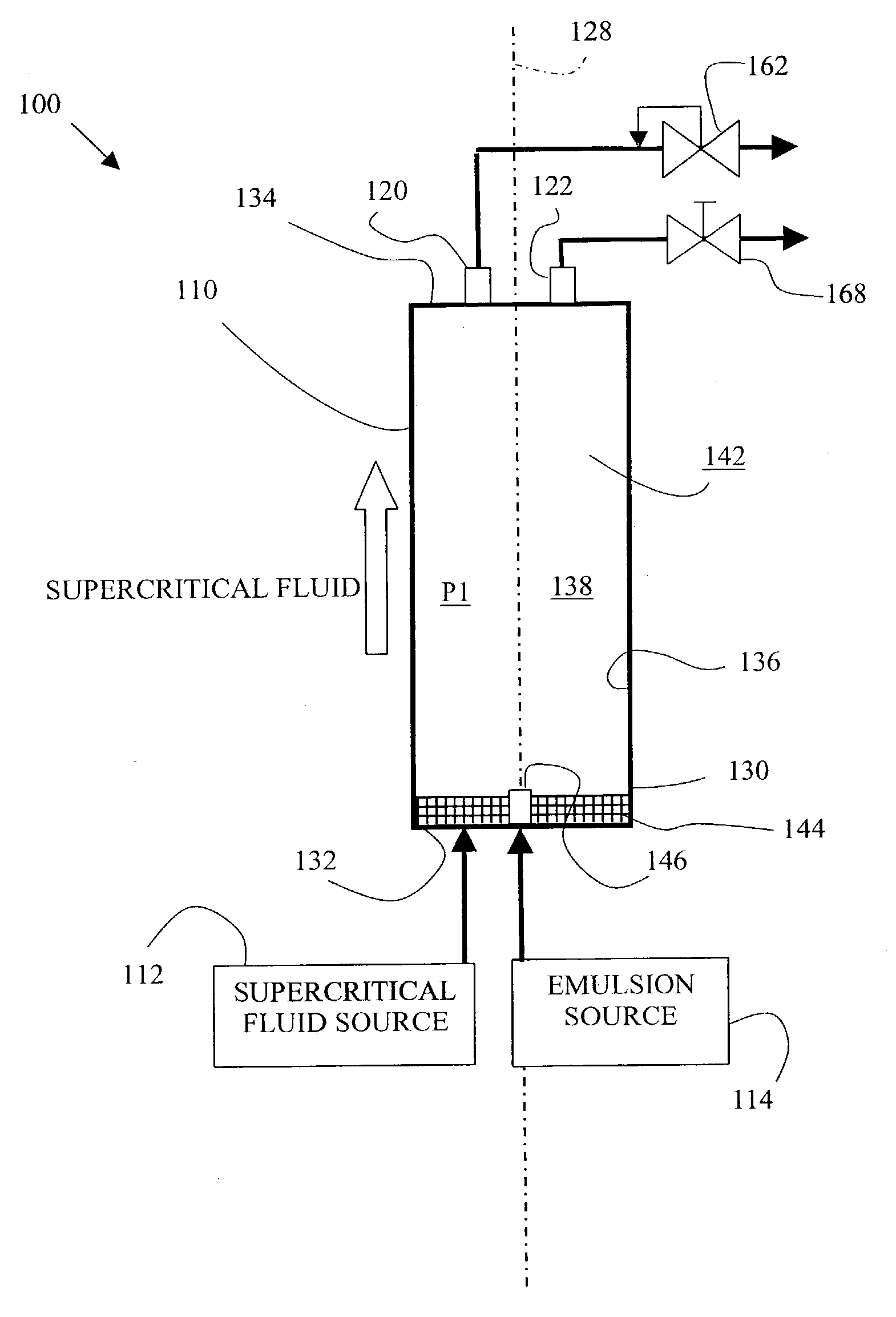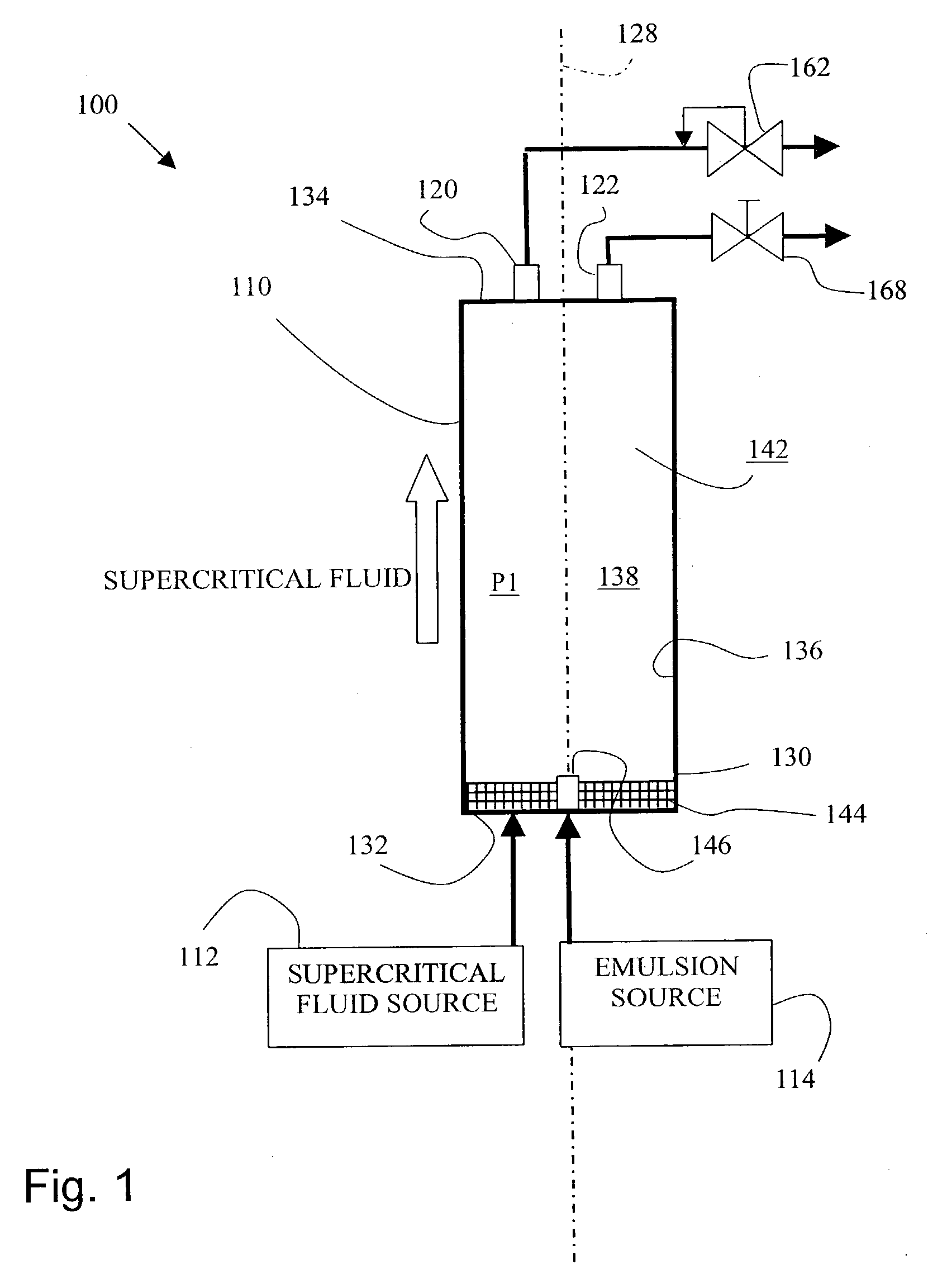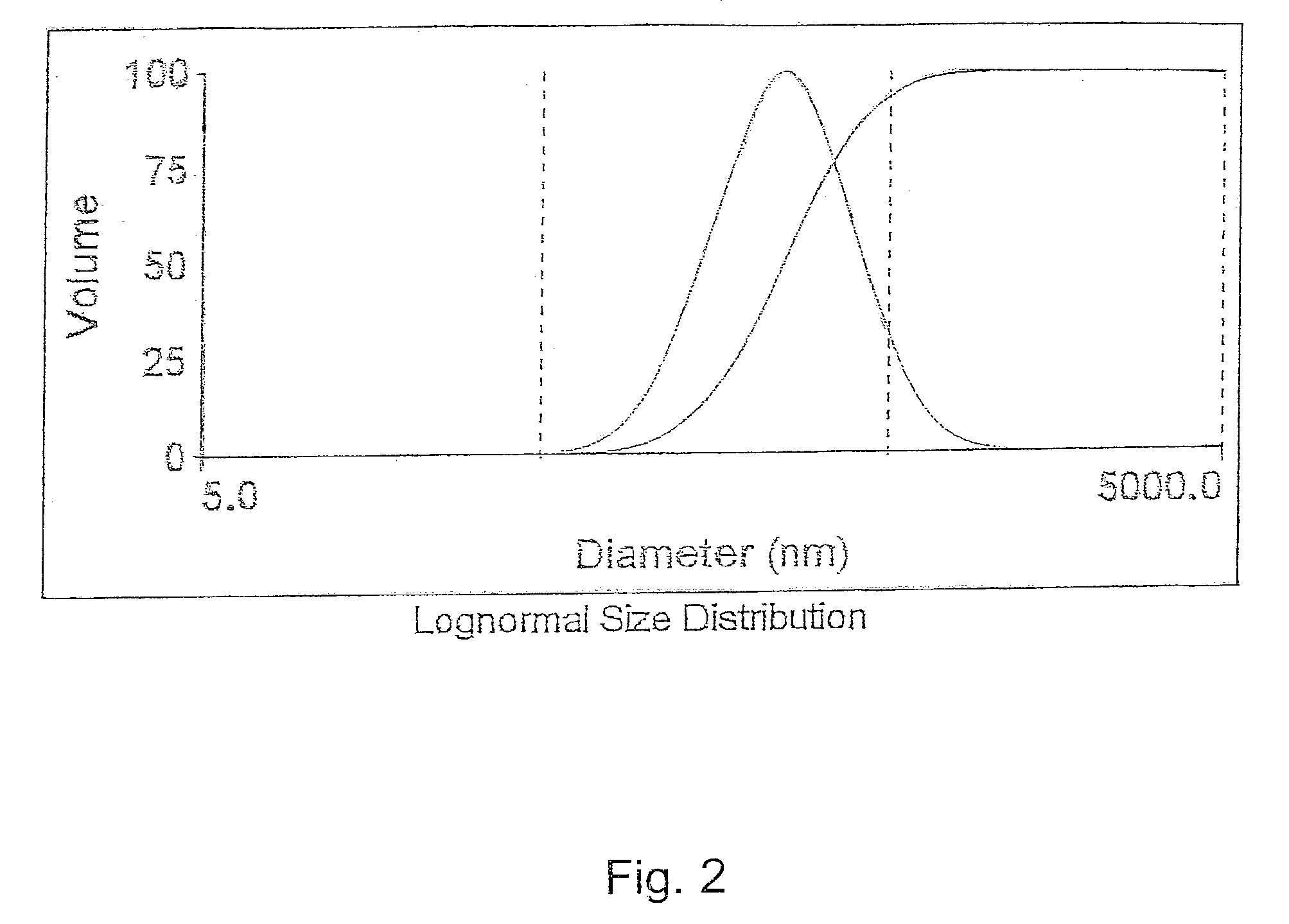Particles from supercritical fluid extraction of emulsion
a supercritical fluid and particle technology, applied in solvent extraction, colloidal chemistry, separation processes, etc., can solve the problems of difficult scaling up, excessive processing speed, and over several hours
- Summary
- Abstract
- Description
- Claims
- Application Information
AI Technical Summary
Benefits of technology
Problems solved by technology
Method used
Image
Examples
example 1
Example 1(a)
Production of Polystyrene Particles by a Method According to the Invention Using a Water Insoluble Organic Solvent
[0051]Preparation of Polystyrene (PS) Emulsion:
[0052]Initially, 0.25 grams of polystyrene (PS) and 0.2 grams of SPAN-80 (surfactant) were dissolved into 20 grams of toluene to form a solution. This solution was then added to 200 grams of water containing 0.3 grams of TWEEN-80 (surfactant) to form a mixture. The mixture was emulsified using a dispersator for 10 minutes at 6000 rpm to form EMULSION 1(a).
[0053]Production of PS Particles:
[0054]In EXAMPLE 1(a), a 4.0 ml aliquot of EMULSION 1(a) was loaded into an extraction chamber having a volume of 10 ml. Glass wool and beads were packed inside the dead volume of the extraction chamber to prevent liquid entrainment during extraction, and to minimize the re-precipitation of residual toluene during depressurization. Supercritical CO2 was then bubbled into the extraction chamber through a 0.5 μm stainless steel fri...
examples 1 (
Examples 1(b)–1(f)
Effect of Pressure and Temperature on PS Particle Size
[0057]EXAMPLES 1(b)–1(f) were performed to determine the effect of pressure and temperature on the size of the polystyrene particles produced by a method according to the invention. Specifically, EXAMPLES 1(b)–1(f) were produced at differing pressure and temperature values using the EMULSION 1(b), as listed in TABLE 1 below.
[0058]Preparation of PS Emulsion.
[0059]EMULSION 1(b) was prepared the same as EMULSION 1(b), except as detailed below. Initially, 0.21 grams of polystyrene and 0.2 grams of SPAN-80 (surfactant) were dissolved into 20 grams of toluene to form a solution. This solution was then added to 200 grams of water containing 0.3 grams of TWEEN-80 (surfactant) to form a mixture. This mixture was emulsified using a commercially available homogenizer (model MY110) at 12,000 psi pressure (3 passes) to form EMULSION 1(b). The size distribution of the droplet sizes was obtained using DLS. The mean droplet siz...
example 2
[0065]Generally, EXAMPLES 2(a)–2(m) illustrate the production of EUDRAGIT RS (EU) particles by a method according to the invention using a partially water soluble organic solvent. Specifically, EXAMPLES 2(a)–2(d) illustrate the effect of surfactant concentration on EU particle size, EXAMPLES 2(e)–2(h) illustrate the effect of solvent concentration on EU particle size, EXAMPLES 2(i)–2(m) illustrate the effect of concentration of the solute in the solution on EU particle size.
Examples 2(a)–2(e)
Effect of Surfactant Concentration EU Particle Size
[0066]Preparation of EUDRAGIT (EU) Emulsion:
[0067]Initially, an EU solution was prepared by dissolving 5% (w / wEA) of EUDRAGIT RS (EU) into a first portion (20 grams) of water-saturated ethyl acetate (EA) solution to form an EU solution. This EU solution was then added to a second portion (180 grams) of water-saturated EA solution containing poly vinyl alcohol surfactant (PVA) to form a mixture. Accordingly, the resultant concentrations were EA a...
PUM
| Property | Measurement | Unit |
|---|---|---|
| diameter | aaaaa | aaaaa |
| diameter | aaaaa | aaaaa |
| diameter | aaaaa | aaaaa |
Abstract
Description
Claims
Application Information
 Login to View More
Login to View More - R&D
- Intellectual Property
- Life Sciences
- Materials
- Tech Scout
- Unparalleled Data Quality
- Higher Quality Content
- 60% Fewer Hallucinations
Browse by: Latest US Patents, China's latest patents, Technical Efficacy Thesaurus, Application Domain, Technology Topic, Popular Technical Reports.
© 2025 PatSnap. All rights reserved.Legal|Privacy policy|Modern Slavery Act Transparency Statement|Sitemap|About US| Contact US: help@patsnap.com



